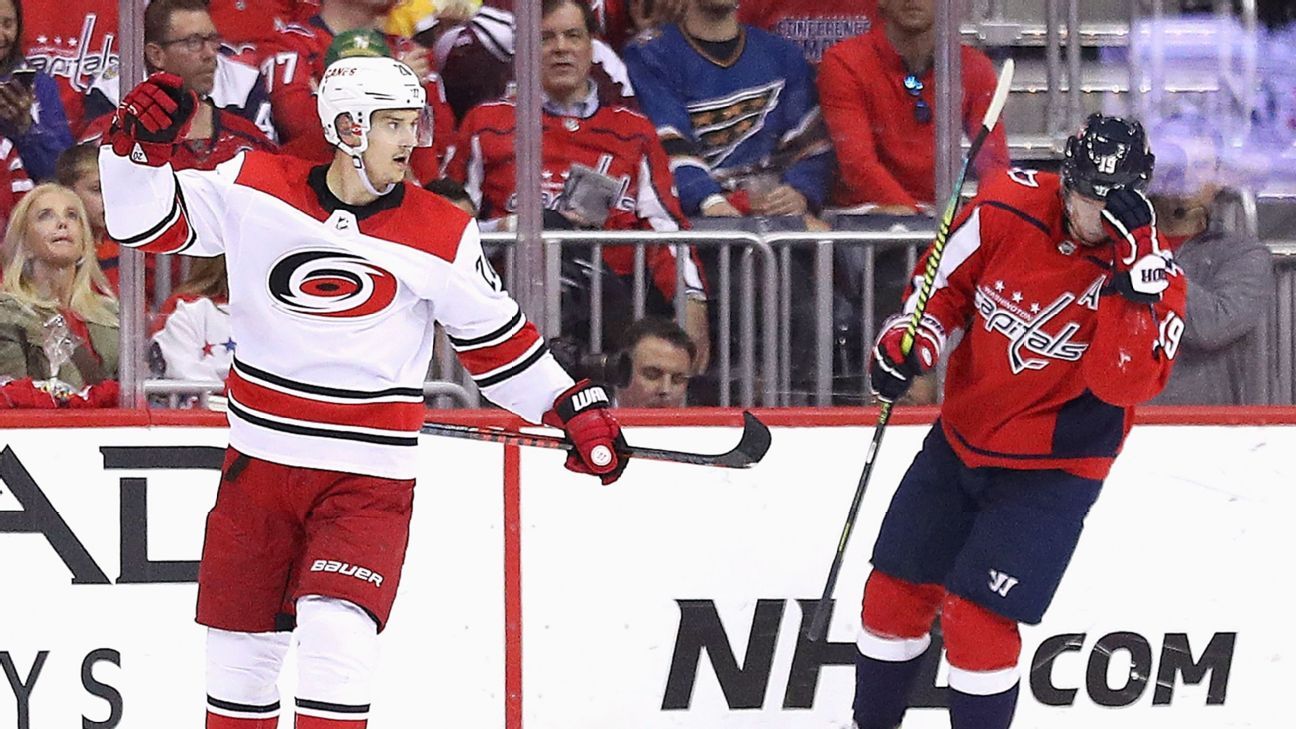The dawn of NHL free agency was crazy, including tons of player movement, a few high-profile trades and the greatest NHL unicorn of them all — a signed offer sheet.
You might be wondering what exactly an offer sheet is and why the Montreal Canadiens applied one on 21-year-old Canes center Sebastian Aho. Here’s a quick explainer:
What is an offer sheet?
Offer sheets can be fun. Offer sheets can be chaos. That’s probably why we rarely see them in the NHL.
Offer sheets are a tool given to general managers through the collective bargaining agreement. A GM (let’s call him GM of Team A) can identify restricted free agents on other teams (Team B) who have yet to sign. The GM on Team A can register an offer sheet for the restricted free agent on Team B and say what term he would like to sign that player for and for how much. The player on Team B can decide whether he wants to sign that offer sheet. If he does, his original team has a week to decide if it’s going to match that offer sheet. If Team B matches it, it’s on the hook for paying that exact contract. If it doesn’t match it, the player goes to Team A, and Team A has to send compensation to Team B.
That compensation is draft picks, the bounty which is relative to the player’s value. There’s one caveat: Team A must use its own draft picks, not ones that it traded for. Here is the set compensation for this season:
What did the Canadiens offer for Aho?
The average annual value (AAV) of the offer was $8.454 million, which, as you can see above, is quite calculated. It skirts the top end of the fifth category, which means the Canadiens would give up a first-round pick, second-round pick and third-round pick if Aho ends up coming over. Had they offered a few more dollars, they would have to surrender two first-rounders.
The Canadiens reportedly considered targeting another RFA, Brayden Point of the Tampa Bay Lightning, but Montreal thought it had a better chance of landing Aho. Why? Because the small-market Hurricanes are vulnerable financially. Aho wasn’t arbitration-eligible, which meant Carolina had a ton of leverage and was lowballing Aho in negotiations. Aho’s camp reportedly asked for $9.5 million per year, a figure at which the Canes scoffed. They reportedly countered with $7.5 million.
This is how the Canadiens think they can burn the Canes: Their offer to Aho was significantly front-loaded, with signing bonuses worth $11.3 million this summer and $9.8 million next summer. Add in the salary, and that’s $21 million in real dollars that the Canes will have to pay over the next 12 months. Tom Dundon might have the money, but is he willing to spend it?
Why did the Canadiens do it?
As Canadiens GM Marc Bergevin said in his news conference on Monday, his only obligations are to Montreal ownership and Montreal fans. He isn’t in the business of keeping his other GMs happy. (Our take: Good for him! This makes the NHL way more fun). Aho would vault to the team’s No. 1 center role and give the team enviable depth down the gut. The Canadiens clearly targeted the small-market Hurricanes knowing they might be vulnerable.
Are the Hurricanes upset about this?
You bet they are! Everything was status quo until GM Don Waddell got an email at 2:40 p.m. Monday telling him what the Canadiens had done. Waddell said he was surprised that the offer wasn’t for more, but he was clearly upset that the term was short: only five years.
If the Canes end up accepting that offer, it walks Aho right up to unrestricted free agency while he’s still in his prime. Not ideal.
What are the Canes going to do?
The Hurricanes have a week to decide if they’re going to match. If they do, then that’s it. They get to keep Aho (at those exact terms), but they cannot trade him for a year as a stipulation.
2:07
The TSN Free Agent Frenzy crew explains what Montreal giving an offer sheet to Sebastian Aho means for Carolina.
All indications point to the Hurricanes matching the offer, despite having to shell out all that cash early.
Why don’t we see offer sheets more often?
Frankly, because the NHL can be an old boys club, and GMs don’t like to ruffle their peers or go against the status quo. There’s another mitigating factor: Offer sheets can be expensive. In an era in which youth rules, it’s important to hit on draft picks and try to win while your stars are still on entry-level deals. If you offer more than $10,568,589 for a player, you’re on the hook to give four first-round picks (though it can be spread over a five-year period). That’s steep.
Has there been an offer sheet before?
In the salary-cap era (since 2005-06), there have been eight offer sheets. The last time we saw one was 2013, when the Calgary Flames offer-sheeted Ryan O’Reilly for two years and $10 million, which was decent money at the time. The Avalanche matched it, though they ended up trading O’Reilly to the Sabres. Before that, Philly made an offer to Nashville RFA Shea Weber in 2012 (the Predators matched), and San Jose offered Chicago defenseman Niklas Hjalmarsson in 2010 (the Blackhawks matched).
There was a fun situation in 2008: Over a seven-day span, the Canucks tried to snag David Backes from the Blues, then Vancouver tried to sign Steve Bernier from the Canucks. Both teams eventually matched for their respective players. The last time a team declined to match an offer sheet was 2007. Edmonton put in a five-year, $21.25 million offer sheet on Anaheim’s Dustin Penner. Then-Anaheim GM Brian Burke infamously called his Edmonton counterpart Kevin Lowe “gutless” and declined to match.
Will we see more offer sheets?
This was the year we were supposed to finally get another offer sheet, and we got one! It’s a historically deep RFA class this summer, and many of the players haven’t signed yet. The working theory: Everyone is waiting for the first domino to fall, which will set the market.
The most speculation on offer sheets thus far has centered on Maple Leafs winger Mitch Marner and Lightning center Brayden Point. Other possibilities: Jets winger Patrik Laine, Jets center Kyle Connor, Flames winger Matthew Tkachuk and Avalanche winger Mikko Rantanen. It would be surprising if there are more. However, if the Canes get back to the Canadiens early in the week and say they’re going to match for Aho, who’s to say Montreal won’t use those draft picks and cap space to go for another one of the available RFAs? After all, Bergevin showed he isn’t wed to conventional thinking.

